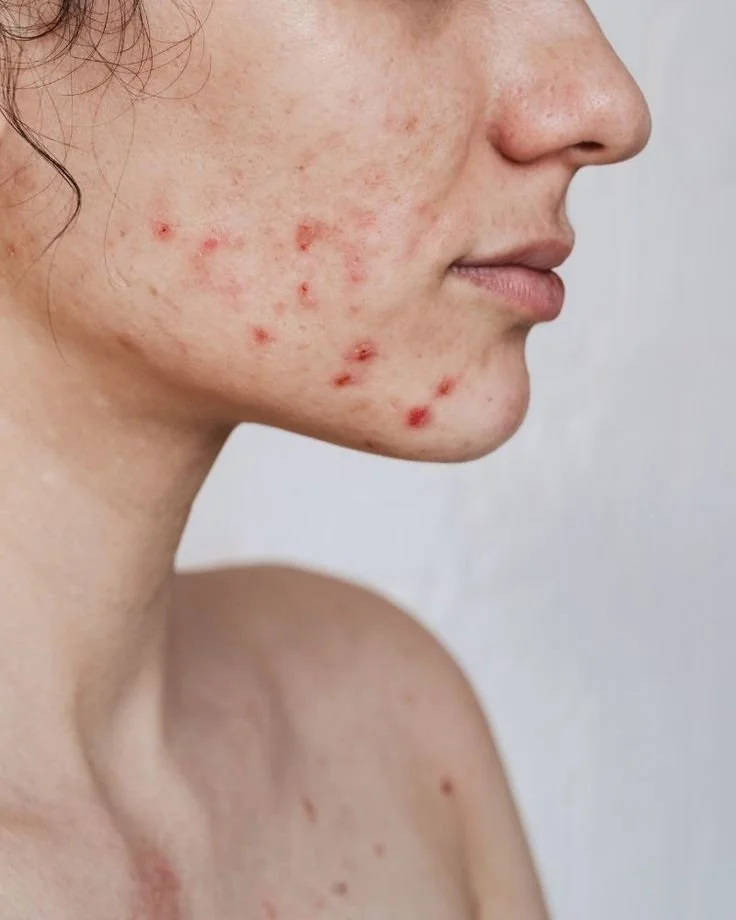Hormonal acne in your 20s? A second puberty no one warned you about.
Just when you thought your teenage skin struggles were behind you, those familiar breakouts start showing up again - this time in your 20s. You’re eating better, using adult skincare, and yet your jawline flares up before your period, your cheeks feel bumpy, and your confidence takes a hit.
Welcome to what many call the “second puberty.” DUN DUN DUUUUUUN
Why it happens
In your 20s, your hormones are still finding their rhythm. Life changes - coming off the pill, work stress, sleep disruption, or shifting routines - can all influence your endocrine system.
Key drivers include:
Fluctuating androgens (like testosterone): increase oil production and clog pores.
Estrogen and progesterone imbalance: low progesterone or estrogen dominance can worsen premenstrual breakouts.
Stress and cortisol: chronic stress elevates cortisol, which triggers inflammation and hormonal shifts that impact skin.
Gut and liver sluggishness: when detoxification pathways are under pressure, excess hormones can recirculate and cause breakouts.
Where it shows up
Hormonal acne typically appears:
Along the jawline, chin, and lower cheeks
As deep, cystic pimples that linger and are tender to touch
Around your cycle, often just before menstruation
A naturopathic approach
Rather than relying on harsh topicals or antibiotics, naturopathy focuses on identifying and addressing the root cause to restore balance internally.
1. Support hormone detoxification
Your liver plays a key role in breaking down hormones.
Include cruciferous vegetables such as broccoli, kale, and cauliflower
Add lemon water or dandelion root tea daily
Reduce alcohol to ease the liver’s workload
2. Balance stress and blood sugar
Both stress and blood sugar spikes can drive androgen activity.
Eat balanced meals with protein, fibre, and healthy fats
Consider adaptogenic herbs such as ashwagandha or rhodiola (under practitioner guidance)
Prioritise quality sleep and daily relaxation rituals
3. Heal the gut
A healthy gut supports clear skin and balanced hormones.
Include fermented foods such as sauerkraut, kefir, or kombucha
Consider probiotics containing Lactobacillus rhamnosus and Bifidobacterium breve
Limit dairy and refined sugars if you notice they trigger breakouts
4. Understand your cycle
Track your menstrual cycle and note when breakouts appear. Patterns can reveal whether acne is linked to hormonal fluctuations, stress, or contraceptive changes. This awareness helps guide treatment and timing of support.
5. Simplify skincare
Over-cleansing or harsh exfoliation can worsen inflammation.
Use a mild, pH-balanced cleanser
Choose non-comedogenic moisturisers and oils, such as jojoba
Opt for gentle zinc-based spot treatments rather than drying agents
Hormonal acne in your 20s isn’t a sign of doing something wrong - it’s your body communicating that something is out of rhythm. By supporting your hormones, liver, gut, and stress response, your skin can begin to rebalance naturally.
If you’re experiencing ongoing breakouts, working with a naturopath can help uncover underlying drivers and create an individualised treatment plan to restore harmony from within.
